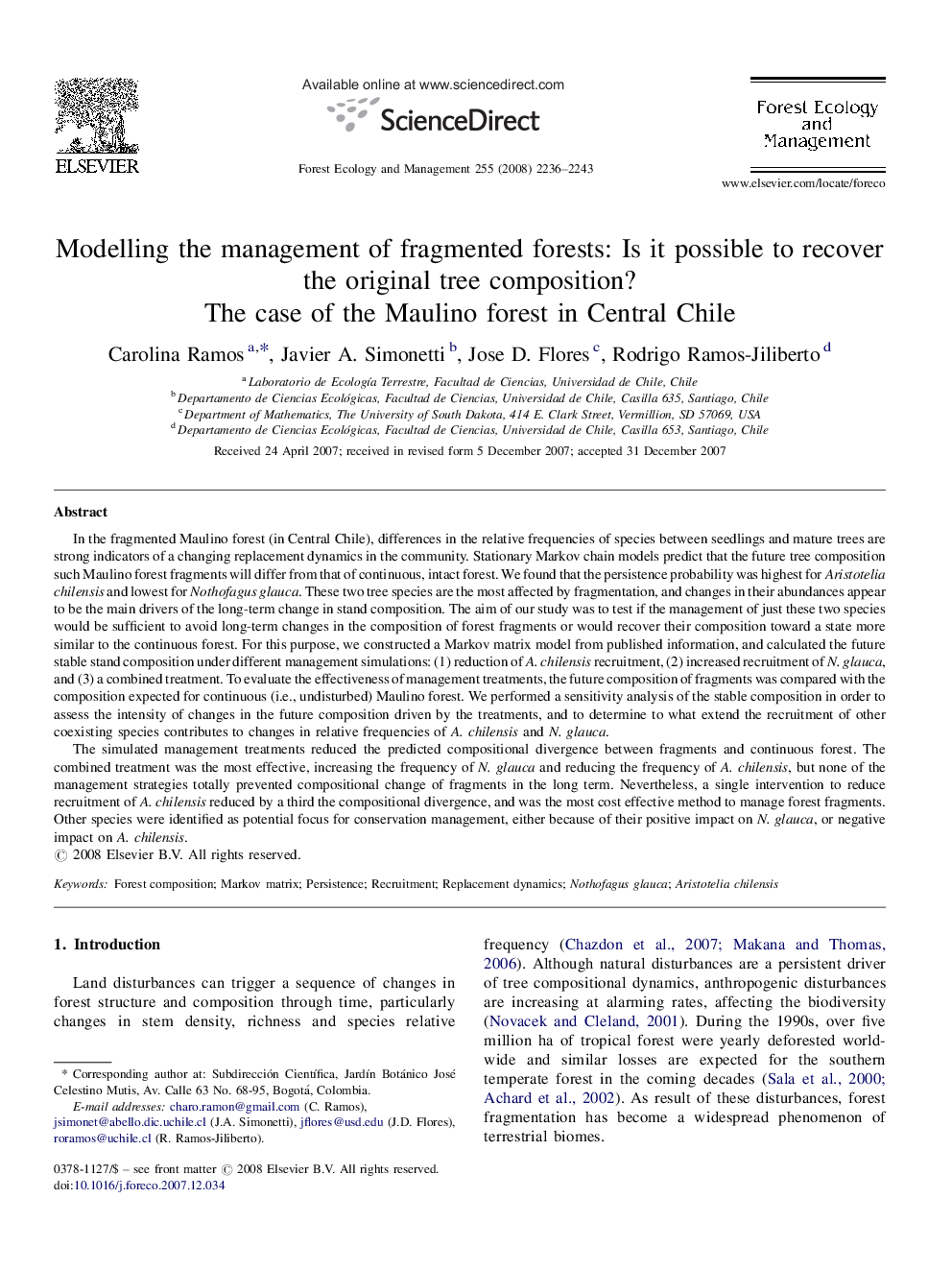| کد مقاله | کد نشریه | سال انتشار | مقاله انگلیسی | نسخه تمام متن |
|---|---|---|---|---|
| 89361 | 159340 | 2008 | 8 صفحه PDF | دانلود رایگان |

In the fragmented Maulino forest (in Central Chile), differences in the relative frequencies of species between seedlings and mature trees are strong indicators of a changing replacement dynamics in the community. Stationary Markov chain models predict that the future tree composition such Maulino forest fragments will differ from that of continuous, intact forest. We found that the persistence probability was highest for Aristotelia chilensis and lowest for Nothofagus glauca. These two tree species are the most affected by fragmentation, and changes in their abundances appear to be the main drivers of the long-term change in stand composition. The aim of our study was to test if the management of just these two species would be sufficient to avoid long-term changes in the composition of forest fragments or would recover their composition toward a state more similar to the continuous forest. For this purpose, we constructed a Markov matrix model from published information, and calculated the future stable stand composition under different management simulations: (1) reduction of A. chilensis recruitment, (2) increased recruitment of N. glauca, and (3) a combined treatment. To evaluate the effectiveness of management treatments, the future composition of fragments was compared with the composition expected for continuous (i.e., undisturbed) Maulino forest. We performed a sensitivity analysis of the stable composition in order to assess the intensity of changes in the future composition driven by the treatments, and to determine to what extend the recruitment of other coexisting species contributes to changes in relative frequencies of A. chilensis and N. glauca.The simulated management treatments reduced the predicted compositional divergence between fragments and continuous forest. The combined treatment was the most effective, increasing the frequency of N. glauca and reducing the frequency of A. chilensis, but none of the management strategies totally prevented compositional change of fragments in the long term. Nevertheless, a single intervention to reduce recruitment of A. chilensis reduced by a third the compositional divergence, and was the most cost effective method to manage forest fragments. Other species were identified as potential focus for conservation management, either because of their positive impact on N. glauca, or negative impact on A. chilensis.
Journal: Forest Ecology and Management - Volume 255, Issue 7, 20 April 2008, Pages 2236–2243